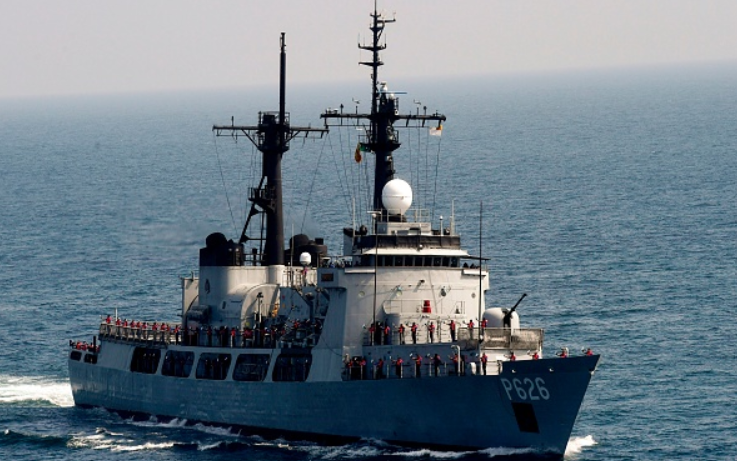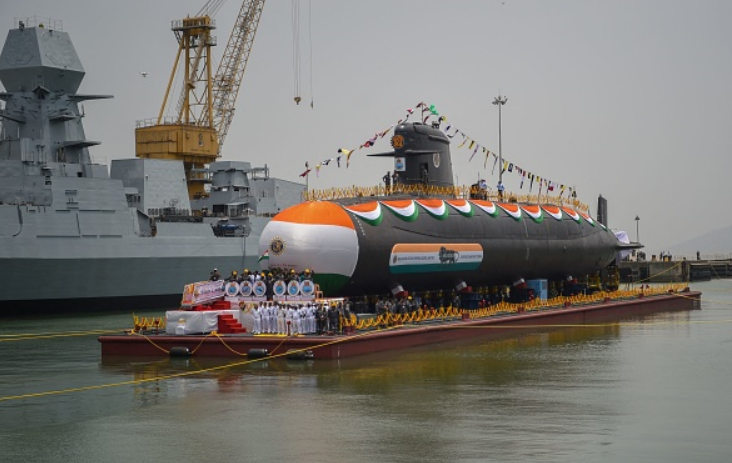
The Arabian Sea and the Indian Ocean are becoming complex matrixes of military ambitions amid recent shifts by India and Pakistan to acquire new naval platforms, emphasizing the growing strategic importance of the Indian Ocean’s Sea Lines of Communication (SLOCs). SLOCs dictate maritime strategy due to their importance in major routes of trade connectivity and commercial and maritime movement. They also contain strategic chokepoints, zones of influence, and significant space for competing states to achieve strategic advantage over adversaries. As New Delhi and Islamabad race to expand maritime operations, both countries have sought to diversify launch options for cruise and ballistic missiles on existing naval vessels. As India and Pakistan modernize their maritime capabilities, they risk undermining deterrence amid escalating geopolitical tensions.
India and Pakistan’s profound interest in modernizing and upgrading existing naval platforms could spark an arms race. Newly acquired and deployed technologies could increase threat perceptions, driving both sides toward a naval arms buildup. Great power competition in the Indian Ocean only exacerbates the naval decisions of India and Pakistan, who must also consider the broader geostrategic interests when engaging with their adversary. To avoid a breakdown in deterrence and the ensuing naval arms race in the Indian Ocean, Pakistan and India must constructively engage in maritime confidence-building and risk-reduction measures by establishing periodic meetings between naval chiefs, discussing arms limitation agreements, and redrawing maritime redlines to prevent any inadvertent incidents from escalating.
A Push for Modernization at Sea
The Arabian Sea’s multidimensional vantage point has made it a favored point of peer competitiveness for great powers. For instance, Robert Kaplan alludes to this as the “primordial drive of the USSR towards warm waters.” In more recent times, the United States indicates its Pivot to China and China has bulwarked its Belt and Road Initiative (BRI) through investments in Pakistan’s Gwadar Port within the China-Pakistan Economic Corridor (CPEC). This range of activity encourages the coastal states to fine-tune their maritime priorities to either bandwagon off great power interests or acquire new partnerships in the maritime sphere of influence to increase their strategic positioning. For instance, Pakistan’s technological collaborations with Turkey and China in modernizing existing platforms and acquiring vessels are matched by India’s combination of indigenous production and U.S. assistance.
Great power competition in the Indian Ocean only exacerbates the naval decisions of India and Pakistan, who must also consider the broader geostrategic interests when engaging with their adversary.
India’s Defense Research and Development Organization (DRDO) is focusing on producing indigenous Air Independent Propulsion (AIP) Technology for its Scorpène-class submarines. Similarly, Pakistan is already preparing to equip its Agosta 90B submarines with Turkish AIP systems. AIP not only allows submarines to remain submerged for longer durations without the need to surface or snorkel for air intake, but it also adds stealth to its maneuverability. Recent submarine detections close to territorial waters and even in violation of maritime borders magnify South Asia’s already volatile security dilemma. Such actions and prospective counteractions to equipping submarines with modernized stealth technology illustrate the dangers of escalation patterns that have characterized previous flashpoints between Pakistan and India. Additional arms and technology acquisition can become a serious concern for strategic stability and deterrence equilibrium.
Pakistan’s technological upgrade is also an alternative to nuclear submarines, which are significantly more expensive than diesel-electric submarines. Unlike India, Pakistan currently lacks nuclear submarines in its naval arsenal. This imbalance could prompt Pakistan to seek nuclear submarines but until it can acquire a reliable supplier, it will likely rely on upgrading existing platforms to match India.
While Pakistan currently aims to enhance its naval prowess by consolidating its green-water navy, India plans on acquiring a blue-water navy to achieve a more pronounced role in the Indian Ocean. As a result, one country’s naval production developments directly prompt a reciprocation by the other. For both states, this military modernization may be a mandatory upgrade, but its implications can be far-reaching.
A Resulting Arms Race
In a prevalent trust deficit environment, India and Pakistan could misperceive each other’s actions to modernize naval platforms during peacetime as provocative. Therefore, military and nuclear deterrence dynamics of South Asia become more complex. The underlying assumption that Pakistan and India are individually engaged in maritime supremacy is challenged by deepening alignments with great powers and their current magnitude of investment in naval power. Pakistan views India’s Mission Based Deployments as prospective naval blockade tactics whereas India sees Pakistan’s collaboration with China as an extension of the People’s Liberation Army Navy (PLAN). While somewhat exaggerated, the pace at which Pakistan and India have prioritized curing their sea blindness provides merit to these assumptions.

Investing in submarine and counter-submarine projects, developing endurance capability for existing diesel-electric platforms, and seeking nuclear submarines all suggest a new dimension of competition between Pakistan and India. The security dilemma architecture of the Indian Ocean is a multilayered spiraled configuration where Pakistan and India compete to modernize their naval structures in the Indian Ocean under the shadow of great power competition between the United States and China.
The Road Ahead
Since entanglement and competition contribute to a risk-intensive environment, Islamabad and New Delhi should redraw their maritime redlines in the Indian Ocean. First, India and Pakistan must both scrutinize their maritime doctrines to identify any potential areas where deterrence failure can be a high-priority eventuality. In addition, both navies can identify common areas of interest in the Indian Ocean for collaboration, such as illegal fishing, maritime border control, counterterrorism operations, antipiracy and counterpiracy operations. Furthermore, both states could collaborate on inadvertent, accidental, or unauthorized breaches of naval jurisdictions. Territorial sea limits have been a cause for concern for both states and violations can trigger serious repercussions unless a comprehensive framework for submarine activity can be bilaterally drafted.
Sea Lines of Communication in the Indian Ocean greatly impact the strategic posturing of littoral states and Pakistan and India are the most substantial players on the maritime chessboard.
Coupled with growing competitiveness among great powers, South Asia’s Sea Lines of Communication (SLOC) would be drastically impacted by the current frame of competition and global influence. South Asia’s maritime trajectory thus becomes a three-pronged matrix; firstly, Pakistan and India are directly affected by the transregional maritime interests of superpowers; secondly, there is a significant spillover of security vulnerabilities from the Pacific and Atlantic Oceans causing friction in the Indian Ocean; and thirdly, the more India and Pakistan modernize military assets and capabilities, the more apprehensive of each other both become. As a result, choosing to modernize on such vast scales and with a multifold of partners, a direct negative effect on deterrence equilibrium is likely to follow. China and the United States have increased naval activity since the Russia-Ukraine war began and amid rising tensions in the Taiwan Strait. Joint military exercises and aggressive naval deployments have prompted polarization of the global SLOCs, which will surely spill over into the Indian Ocean as a major convergence point.
Sea Lines of Communication in the Indian Ocean greatly impact the strategic posturing of littoral states and Pakistan and India are the most substantial players on the maritime chessboard. In the absence of comprehensive risk reduction mechanisms and trust consolidation, Pakistan and India might experience a Cold War security dilemma. Pakistan and India are modernizing their naval platforms and enhancing their maritime footprint to outperform their adversary in an environment shrouded in great power competition, but such actions without any limitations or control mechanisms would reconstruct the maritime trajectory and security makeup of the Arabian Sea and the Indian Ocean.
***
Image 1: Asif Hassan/AFP via Getty Images
Image 2: Punit Paranjpe/AFP via Getty Images


